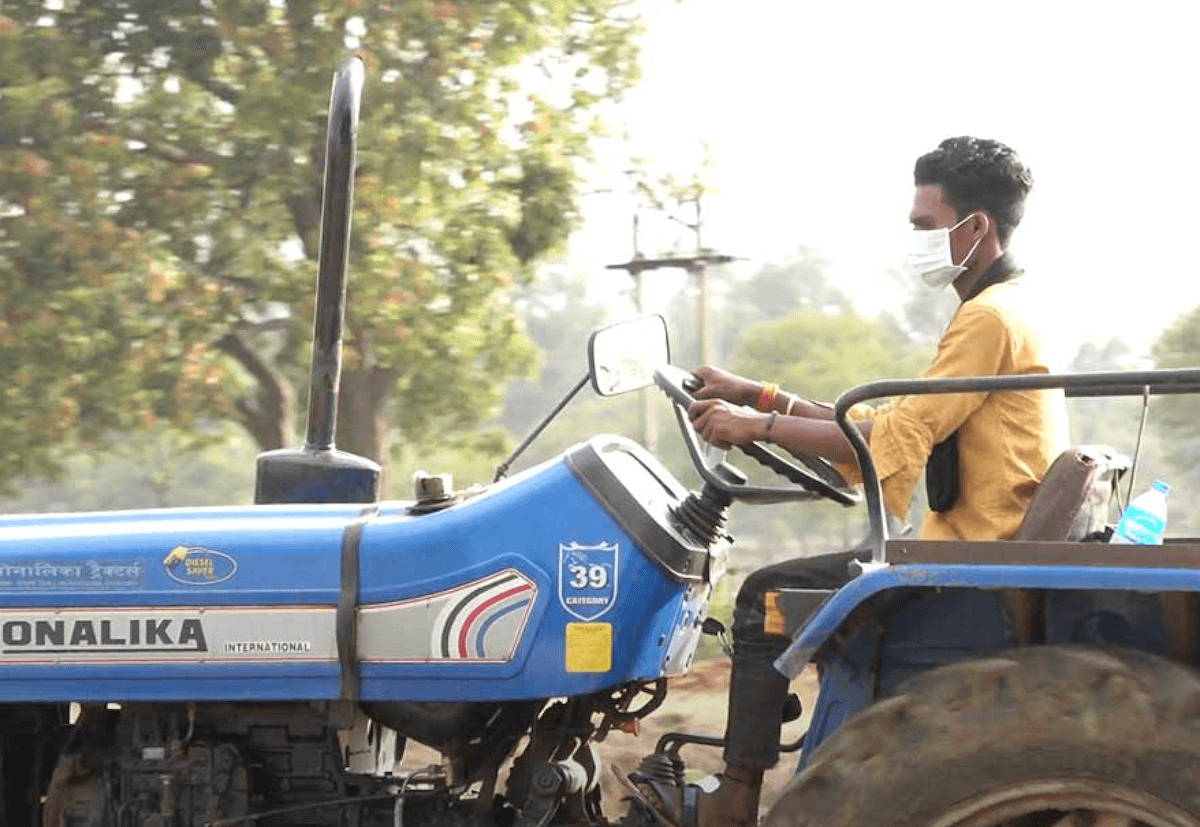Ashish Kumar is a long-time climate investor and a market / ecosystem builder. He is a strategic advisor to Mati Carbon.
This month, Mati Carbon, a Public Benefit Corp. active in the Global South, announced the successful sale of its first carbon removal credits to a group of major global corporate buyers facilitated by the Frontier program. This marks a significant development for Mati Carbon, for the emerging carbon removals sector, and for the climate markets’ broader role in driving inclusive climate resilience and a just transition.
Houston-based Mati Carbon has demonstrated that it is possible to deliver durable carbon removal to corporate buyers with net-zero targets while providing a means to boosting farmers’ income, climate resilience and food security in India and the Global South.
By 2050, nearly 80% of the farmers in countries such as India, Ethiopia, and Mexico could be affected by at least one climate hazard; globally the potential affected farmer population amounts to a staggering 500 million. Current global adaptation funding only covers 20% to 30% of projected annual adaptation financing needs.
The adaptation finance gap disproportionately affects women, who form 48% of the agricultural labor force in low-income countries and depend on these farms for basic nutrition and livelihoods.
While several innovative donor-led instruments and mechanisms are emerging to tackle the adaptation financing gap, most of them are grant-based models relying on significant injection of donor capital, which may not necessarily be scalable or sufficient. Proven market-based mechanisms such as carbon credits, meanwhile, are largely targeted towards climate mitigation. Although the carbon credit market has been maturing for a while as an asset class (albeit not without several challenges of late), average prices in the voluntary carbon markets still hover around $7 per ton on average. Net-zero 2050 aligned carbon prices need to be around $100 to $200 per ton for 2030 and rise sharply until 2050.
Enhanced rock weathering
Mati Carbon is working to leverage the carbon markets with a technology that sequesters carbon, enhances soil health, and supports sustainable agricultural practices and smallholder farmers’ livelihoods and climate resilience. Mati’s founder Shantanu Agrawal’s goal with the company and its technology is to boost both income and climate resilience for 25 million lives while sequestering five million tons of CO2-equivalent in the next decade.
The company, with deep local operations in India and soon expanding to the other regions globally, is an emerging leader in “enhanced rock weathering,” or ERW technology, which has more than 10,000 years of carbon removal permanence potential. Mati Carbon’s medium: basalt and other types of rock dust. When added to soil, basalt enhances and accelerates carbon sequestration, which otherwise in nature takes thousands or millions of years. At the same time, the basalt dissolution enriches soil with macro-nutrients like calcium and magnesium – essential for plant structure and growth – and micro-nutrients like manganese and zinc for enzyme function and disease resistance in crops that boost the soil fertility and crop productivity at the same time, thereby eliminating the need for pesticides as well.
In a pilot of its technology in 2022, Mati Carbon worked with rural farmers in the Chhattisgarh state in central India to use the basalt rock dust as a feedstock in their rice paddy fields. Mati Carbon provided farmers with its basalt powder at no cost to farmers. Over a single cropping season of roughly six months, farmers in Mati Carbon’s pilot saw a 20% growth in crop yields. There was also a remarkable reduction in pestilence, allowing farmers to save roughly 10,000 rupees ($130) each on input costs, nearly equivalent to a farmer’s monthly average income. They also realized a 25% to 30% increase in incomes.
Through the project, Mati Carbon was able to deliver the first 50 tons of engineered carbon removal credits to the corporate buyers in the Frontier consortium, which includes Stripe, Alphabet, Shopify, Meta, McKinsey Sustainability, and tens of thousands of businesses using Stripe Climate. Frontier has made an advance market commitment to buy $1 billion of permanent carbon removal credits between 2022 and 2030.
Mati Carbon has since sold an additional 1,543 tons of carbon removal credits, and aims to scale that up significantly. Its objective is to pass 100% of the profits back to farmers, amounting to anywhere between 5% to 10% of farmers’ incomes.
Delivering impact
Mati Carbon’s holistic intervention has already led to a household income boost and soil regeneration for several small-scale farmers, including Narayan Singh from Bhadaura, Chhattisgarh.
Singh is a diligent farmer whose average living income before the project was $4/day, which he earned managing three acres of land growing crops such as rice. Singh grapples with the harsh realities of climate change, facing high temperatures up to 45 degrees Celsius and an increasing probability of unpredictable rain patterns and other climate hazards. Like many farmers in his community, Narayan lacks private crop and/or weather insurance and relies on limited government support, making him vulnerable to weather and crop-yield uncertainties.
Singh and other farmers’ income growth through Mati Carbon’s pilot program was enabled both by the input’s effect on the soil and crops’ health, and by the relatively high market price of carbon removal credits. Removal credits are in high demand and short supply: 97% of credits sold in the voluntary carbon markets are based on estimates of carbon emissions avoided, rather than captured and permanently sequestered.
Advantages of the model
Mati Carbon’s pilot points to a scientifically sound and innovative approach for scalable and sustainable ERW-backed carbon removal credits while driving livelihood impact outcomes. The enterprise’s approach is promising in the following ways:
- Proven high climate mitigation impact, with carbon removal permanence of more than 10,000 years, one of the highest among all types of engineered removal technologies – one of the key determinants of the quality of the removal credit.
- Proven high climate adaptation and income impact potential for the smallholder farmers and broadly to the climate-vulnerable population in the Global South, leading to high additionality and social co-benefits and as compared relatively to some of the other major currently scaling engineered carbon removal technologies with proven high permanence, such as direct air capture, bio-energy with carbon capture and storage, biochar, and ocean-based approaches.
- Relatively lower cost of sourcing, deployment, and delivery of removals credits for the ERW technology due to no significant need of large additional infrastructure (among other peer technologies) and with further significant economies of scale potential.
- Significantly high prices of engineered removals credits – currently trading at prices of more than $300 per ton on average, with the longer-term price levels projected of around $100 per ton. Some reports even predict engineered removals would be the future of high-quality high-durability voluntary carbon markets.
- Long-term demand-led market dynamics for the engineered removals due to a significant shortfall in the current supply. Just 3% of credits in the voluntary carbon market will come from pure carbon removal projects in 2030, resulting in premium pricing.
- Broad & diverse applicability of the ERW technologies across the various regions, crop types and weather – allowing them to be replicated across countries not just in emerging markets, but also in the soil and weather conditions elsewhere. This broad applicability allows for adaptation impact across multiple regions and farm value chains and across a large subset of the climate-vulnerable population.
Science-based approach
Rigorous science underpins Mati Carbon’s ERW approach, driven by an intense focus on robust and independently verified monitoring, reporting and verification methods. Field measurement and samples for lab testing are collected with accurate geo-tagging. The laboratory tests are run under the supervision of Yale University’s Center of Natural Carbon Capture to quantify the carbon removal. Mati’s chief scientific officer Jake Jordan worked closely with collaborating scientists to publish a recent study validating the use of Mati’s independent monitoring, reporting and verification methods.
Mati Carbon’s emphasis on publishing research through partnerships is also part of its commitment to developing reliable and scalable solutions for carbon removal. The team sees collaborations as a way to “cheaper, yet more reliable monitoring, reporting and verification, we can build a future where ERW works in the Global South to benefit the people who actually live there,” according to Jordan.
Climate financing flows are inequitable, with the majority focusing on carbon mitigation in the Global North. There is a $300 billion annual adaptation financing gap that needs to be urgently addressed. Within this context, the rise of removals carbon markets presents a notable opportunity.
For now, demand for carbon removal credits is expected to exceed supply at least through 2030. The market opportunity by 2040 could be as high as $135 billion, creating a stable and attractive market to scale carbon removals with ERW. Mati Carbon’s early EWR deployment signals that engineered removals can be a viable and scalable option to finance climate adaptation while simultaneously supporting global corporations reach their net-zero goals. Supporting enterprises like Mati Carbon not only addresses the urgent need for carbon removal to combat climate change, but also significantly enhances the economic security and climate resilience of vulnerable farming communities.
Ashish Kumar is a long-time climate investor and a market / ecosystem builder. He is a strategic advisor to Mati Carbon.











